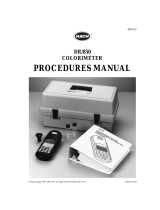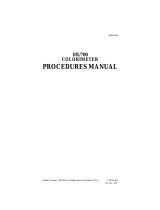
5
Handling, Storing, and Disposing of Full Disclosure
Materials:
Disclosing Powder #1
Powdered potassium rhodizonate compound.
Storing: Keep vial tightly closed and store in a cool, dry place.
Handling: Wear chemical-resistant gloves (included in kit). Avoid contact with eyes,
skin, and clothing. Do not inhale or ingest. Avoid prolonged or repeated
exposure. Wash thoroughly after handling.
Disposing: Whatever cannot be saved for recovery or recycling should be disposed in
an appropriate and approved waste disposal facility. Observe all federal,
state, and local environmental regulations.
For more details, see Safety Data Sheet (SDS) for Full Disclosure at www.skcinc.com/
knowledgecenter.
Extraction Solution #2
5% acetic acid and water solution.
Storing: Store in spray bottle at room temperature.
Handling: Non-toxic, however, avoid contact with eyes and mucous membranes and
prolonged inhalation.
Disposing: Non-polluting; can be diluted with water and poured down a sink drain.
Developing Solution #3
Deionized water mixed with Disclosing Powder #1
Storing: After mixing, keep Developing Solution #3 cold [approx. 35 F (2 C)]
whenever possible. In the field, keep the solution in a cooler and isolated
from food.
Developing Solution #3 will remain active for several hours at room
temperature and for 10 days if stored in a refrigerator. It is recommended
that the solution be used as soon as possible. When it deactivates, it changes
color from orange to pale yellow. If solution changes color from orange to
pale yellow, discard (see Disposing) and mix fresh solution.
Handling and
Disposing: See Disclosing Powder #1 above or SDS for Full Disclosure Disclosing Powder
#1 at www.skcinc.com/knowledgecenter.
Full Disclosure Wipes After Testing
Storing: Do not store. Dispose of wipes as outlined below or insert into sample
collection bottles and send to a laboratory for analysis.
Handling: Wear nitrile gloves to avoid contaminating the wipe.
Disposing: Dispose of used Full Disclosure wipes and any unused material observing
all federal, state, and local environmental regulations.











